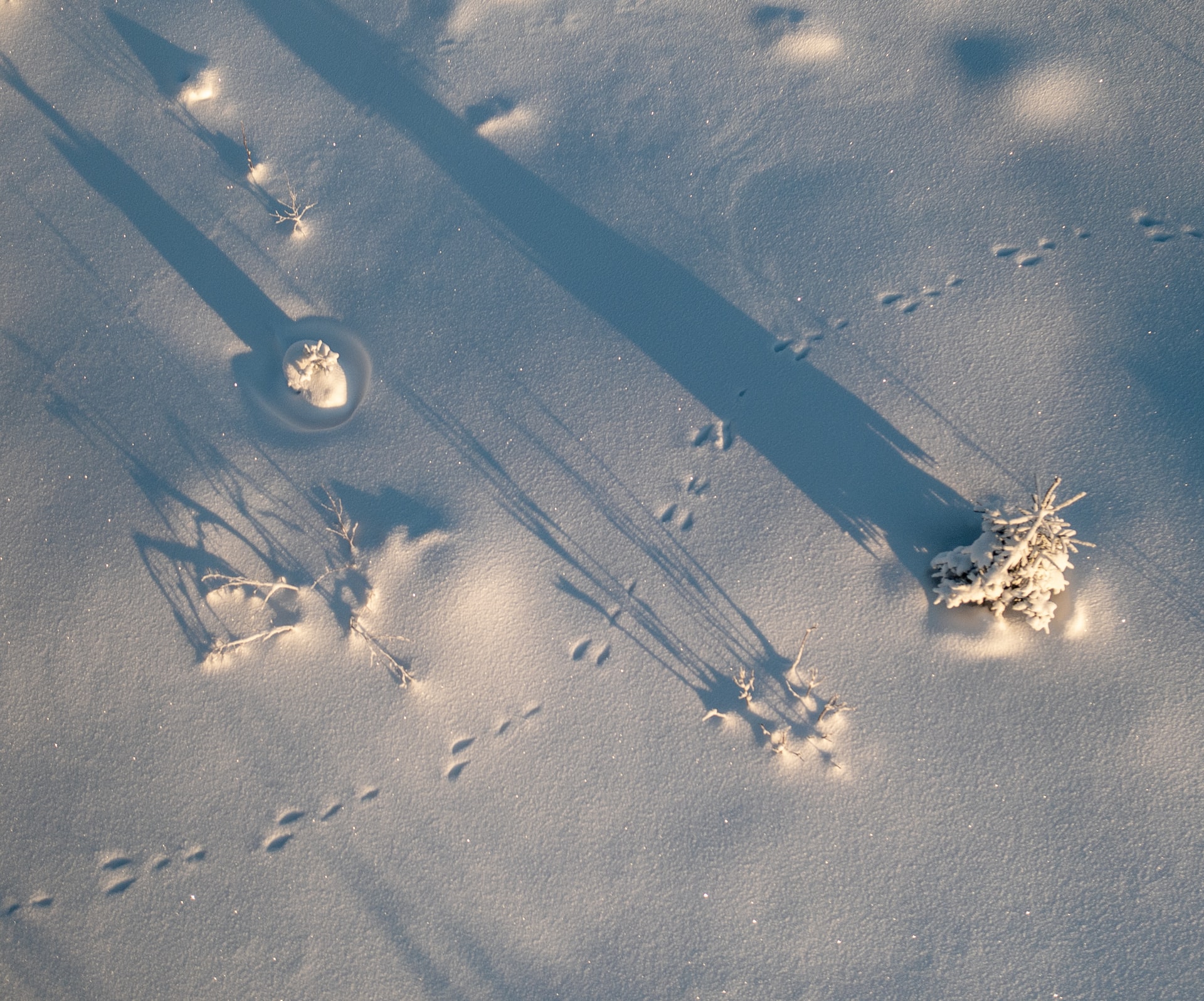By Wolf Ridge Naturalist
Snowshoe Hare, Lepus americanus, is the most common “rabbit” of Minnesota’s North Woods.
Living in the dense thickets of northern coniferous forests, the snowshoe hare feasts on a bounty of needles and buds during the winter months. In the summer, the snowshoe hare is overall a dark brown color with black-tipped hair and a white spot on its forehead between the eyes.
However, decreasing amounts of daylight in accordance with winter trigger a change in the hare’s coloration from its summer dark grizzled appearance to white with a brown nose and black-tipped white ears. Coincidentally, this stark white winter coat against a snowy backdrop wonderfully camouflages the animal. Some hunters even refer to snowshoe hares as “chameleons of the cold.”
Camouflage serves an important role in keeping snowshoe hares undetected by predators. The snowshoe hare shares its habitat with some of Minnesota’s top predators such as Canadian Lynx, red foxes, gray wolves, coyotes, large hawks, and great-horned owls. Of these top predators, none has a more intricate relationship with the snowshoe than the Canadian Lynx, Lynx canadensis.
The nature of the relationship between these two species is considered a classic example of how interactions between a predator and its prey can influence population dynamics of both species, hence, Canadian lynx populations rise and fall with fluctuations in populations of snowshoe hares. This phenomenon has been observed for hundreds of years, even dating back to observations made by trappers of the Hudson Bay Company.
To survive amid frigid weather conditions, deep snow, and skilled predators the snowshoe hare has developed some rather successful adaptions. Named “Snowshoe” for its large hind feet, the animal leaves a distinctive track that we can observe throughout winter. Large hind feet with extra fur growth enable the hare to move speedily and without sinking over deep, soft snow. When searching for snowshoe tracks around Wolf Ridge, it helps to venture over to the thickets and wetland areas along the Baptism River ski trails. There, you will find sets of four tracks showing the animal’s forepaws falling one in front of the other with hind prints behind (see photo.)
Be sure to look for well-worn snowshoe hare trails used frequently throughout these cold months. Occasionally, you may even come across pea-sized, dry, woody, light brown pellets sprinkled along these trails. And if you are frequenting these areas on a brisk night hike or on short, overcast days in the depths of winter, you may even catch a glimpse of the snowshoe hare.

